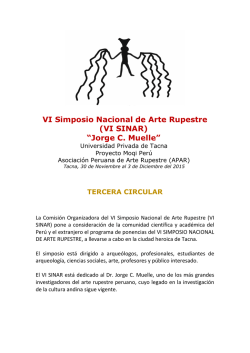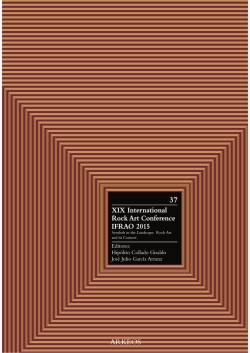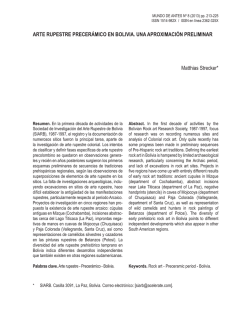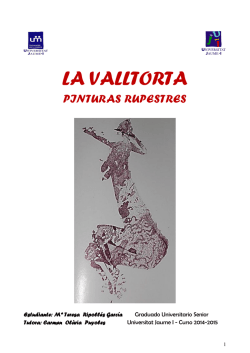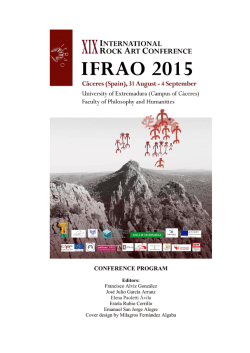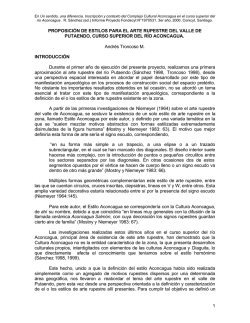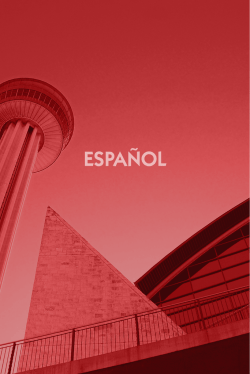
De artis rupestris - Universitat Jaume I de Castelló
De artis rupestris International Conference Proto-historical and Historic Rock Art in the Iberian Peninsula 3 & 4 November 2014 Aula Magna (HA 1012CC) Facultat de Ciències Humanes i Socials Universitat Jaume I Presentación Presentation Hoy en día, la catalogación y estudio de las representaciones de arte rupestre no se limita únicamente a la interpretación de manifestaciones artísticas de la Prehistoria, pues a la luz de los nuevos descubrimientos se han podido datar y analizar otras representaciones. Se trata de figuraciones elaboradas a lo largo de la Protohistoria, de la Edad del Hierro, de época romana, de grafitis medievales y postmedievales, y también de iconografía moderna, lo que constituye para el arqueólogo y para el investigador en general una importante fuente de información sobre los procesos socioculturales desarrollados en estas etapas. Esta reunión de investigadores nacionales e internacionales debe contribuir a explicar el final de las manifestaciones rupestres de la Prehistoria y las pervivencias que el arte rupestre tuvo a partir de la Protohistoria y durante las diferentes etapas históricas en la Península Ibérica. La perduración de las diversas manifestaciones gráficas, ya sean pintadas o grabadas, ha sido planteada en varias ocasiones por los principales especialistas en arte rupestre. Sin embargo, hasta la fecha, ningún congreso internacional ha abordado de forma global la problemática de estas manifestaciones artísticas en la Peninsula Ibérica y el estudio de un número cada vez mayor de paneles pintados y grabados de época histórica que aparecen repartidos por toda la geografía peninsular. Nowadays, the cataloguing and the study of rock art representations are not only limited to the representation of prehistoric artistic manifestations, since in the light of new discoveries other representations have been dated and analysed. It deals with produced figurations/images throughout the Protohistory, the Iron Age, the Roman period, medieval and post medieval graffiti as well as modern iconography, which have constituted for the archaeologist and for the researcher in general an important source of information on sociocultural processes developed in these stages. This conference is aimed at gathering national and international researchers to share their knowledge about the end of the prehistoric rock art paintings and the survival that rock art had since Protohistory and along the different historical stages in the Iberian Peninsula. The persistence of the different graphic manifestations, whether painted or engraved, has been considered by wellknown specialists in rock art. However, to date, no international conference has considered in a global way the issue of these artistic manifestations in the Iberian Peninsula and the study of an increasing number of painted and engraved panels of historical age that appear spread out throughout the whole Peninsula. El tema central del congreso es el estudio del arte rupestre prehistórico e histórico en la Península Ibérica. Las sesiones científicas se distribuirán en tres áreas temáticas diferentes: The main topic of the conference is the study of prehistoric and historical rock art in the Iberian Peninsula. The scientific sessions will be distributed in three different areas: • El final del arte rupestre prehistórico. • El arte rupestre protohistórico. • El arte rupestre histórico. • The end of prehistoric rock art. • Protohistorical rock art. • Historic rock art. PROGRAMA • CONFERENCE PROGRAMME Lunes, 3 de noviembre / Monday, 3rd November 9:00 h: Recepción y entrega de documentación / Reception and documentation delivery 9:30 h: Inauguración oficial / Opening session 10:00 h: Conferencia Inaugural / Opening talk 11:00 h: Pausa café / Coffee Break Primera sesión. El final del Arte rupestre prehistórico / Session 1: Prehistoric Rock Art 11:30 h: Ponencia marco / Plenary lecture. Prof. Dr. Mauro Hernández Pérez (Universidad de Alicante) 12:30 h: Comunicaciones / Communication session 14:00 h: Almuerzo / Lunch Segunda sesión. El Arte rupestre protohistórico / Session 2: The Proto-historical rock art 16:00 h: Ponencia marco / Plenary lecture. Prof. Dr. Fernando Coimbra (Instituto Terra e Memória, Politécnico de Tomar, Portugal). 17:00 h: Pausa café / Coffee Break 17:15 h: Comunicaciones / Communication session Martes, 4 de noviembre / Tuesday, 4th November 9:00 h: Visita organizada al Barranc de la Valltorta (Tírig) / Conference excursion to the ravine of La Valltorta (Tírig). Dr. Josep Casabó Bernard (Museu de la Valltorta). 14:00 h: Almuerzo / Lunch Tercera sesión. El Arte rupestre histórico / Session 3: Historic Rock Art 16:00 h: Ponencia marco / Plenary lecture. Prof. Dr. Philippe Hameau (Université de Nice-Sophia Antipolis) 17:00 h: Pausa café / Coffee Break 17:15 h: Comunicaciones / Communication session 19:30 h: Clausura / Closing ceremony De artis rupestris International Conference SEDE CONGRESO • VENUE Facultat de Ciències Humanes i Socials. Universitat Jaume I de Castelló. Av. de Vicent Sos Baynat, s/n, 12071 Castellón de la Plana Entidad patrocinadora / Conference host Conselleria d’Educació, Cultura i Esport. Generalitat Valenciana Entidad colaboradora / Sponsored by Servei d’Investigacions Arqueològiques i Prehistòriques de la Diputació Provincial de Castelló IVC+R. CulturArts de la Generalitat Museu de la Valltorta. Generalitat Valenciana Servei d’Investigacions Arqueològiques i Prehistòriques Contacto / How to contact us Telf. / By telephone: +34 964 729643 / +34 964 729681 E-mail / By email: [email protected]
© Copyright 2025
